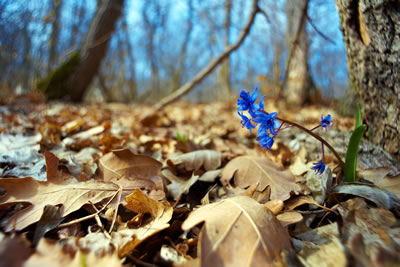The need for specialist environmental survey
- National Vegetation Classification (NVC)
- Lower plant species – mosses, liverworts and lichens
- Hedges
- Invertebrates – terrestrial or aquatic
- Invasive plants
We can provide expert specialist surveyors to deliver these types of studies in a timely and cost-effective way and in line with national guidance.
Environmental surveys - National Vegetation Classification (NVC)
Phase 1 Habitat Survey may not always be appropriate as a baseline. Where more detailed information is needed - for example where nationally important habitat-types are encountered in the initial walkover - we can undertake an environmental survey based upon National Vegetation Classification (NVC) techniques. By sampling and mapping the various vegetation-types within a site we can provide a detailed overview of habitat complexity and compare plant communities, including those of conservation interest, with local, regional and national types, thereby gaining an insight into plant community origins and past management activities that might have influenced present vegetation composition.Environmental Surveys - Hedges
Where proposed development works would affect hedges we can undertake environmental surveys to inform a Hedgerow Regulations assessment using a survey technique based upon the Hedgerow Evaluation and Grading System (HEGS).Environmental Surveys - Rare Plants
We can undertake detailed environmental surveys of botanical diversity and abundance, to:- determine whether any rare plant species are present on a site
- provide a baseline against which to monitor change
- inform an assessment of a sites’ conservation value and
- help guide appropriate site management
Environmental Surveys - Invertebrates
The majority of British invertebrates are not protected by law, however entomological studies are periodically requested by local authorities and statutory agencies as part of ecological impact assessments - especially where the aquatic environment may be affected or where potentially invertebrate-rich ‘brownfield sites’ are proposed for development.Environmental survey techniques for terrestrial invertebrates depend on the nature of the site and the species or group under study. A thorough survey might involve a combination of sampling on several occasions during spring, summer and autumn.
We also undertake surveys of aquatic habitats and have experience of a wide range of appropriate sampling techniques and monitoring methods.
Environmental Surveys - Invasive Plants
Non-native, invasive plants are a significant threat to the integrity of natural ecosystems and can involve significant time and expense to eradicate. It is vital therefore that a developer knows the location and extent of invasive species on their site – ideally well before a project starts. The most commonly encountered invasive plant in the UK is Japanese knotweed, followed by Himalayan balsam along water courses, and giant hogweed; the leaves of which are toxic to the touch. Other occasionally encountered invasive plants include the aquatic species New Zealand swamp stonecrop, water fern and parrot’s feather.Environmental survey of invasive plant species focusses on mapping the distribution of such species within a site. We can also advise on the legislative position and most appropriate methods of eradication.

